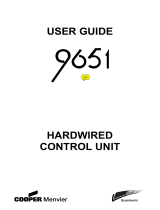
Page 2 496930
Contents
1. Introduction........................................3
The Alarm System................................3
The Keypad..........................................3
About This Guide .................................5
2. Everyday Operation...........................6
How Do I Know if the System is
Working?..............................................6
Setting the System...............................6
Timed Set.........................................7
Exceeding the Exit Time ..................7
Final Door Set..................................8
Using an Exit Terminate Button
to Set the System.............................8
Part Setting ......................................9
Instant Set........................................9
Keyswitch Setting...........................10
Lock Set.........................................11
If the System Will Not Set ..................12
Detector Active...............................12
Other Faults (Service Lamp
Glowing).........................................12
What To Do When Service and
Line Fault Glow..................................13
Unsetting the System.........................14
Unsetting From a Keyswitch...........14
Unsetting From the Keypad ...........14
Unsetting with a Lock Switch..........15
If You Exceed the Entry Time........ 15
Starting Alarms Yourself.................... 16
Duress Code ..................................... 16
3. After an Alarm.................................. 17
Fire Alarm.......................................... 17
Disarming the System ....................... 17
Resetting the System ........................ 17
Customer Reset............................. 18
Remote Reset ............................... 18
4. Special Functions............................ 19
Introduction........................................ 19
Omitting Zones.................................. 19
Access Codes ................................... 20
Duress Code ................................. 20
Changing Access Codes ............... 21
Proximity Tags............................... 22
To Add a Tag................................. 22
To Delete a Tag:............................ 23
Using the Log .................................... 24
Table 1. Log Event Codes............. 24
Setting the Time and Date................. 26
Turning the Chime On/Off ................. 26
Testing the System............................ 27
Bell Test ........................................ 27
Walk Test ......................................27
9651 Hardwired Control Panel User Guide.
© Cooper Security Ltd. 2004
Every effort has been made to ensure that the contents of this book are correct. However, neither the authors
nor Cooper Security Limited accept any liability for loss or damage caused or alleged to be caused directly or
indirectly by this book. The contents of this book are subject to change without notice.
Printed and published in the U.K.
Part No. 496930 Issue 2




















